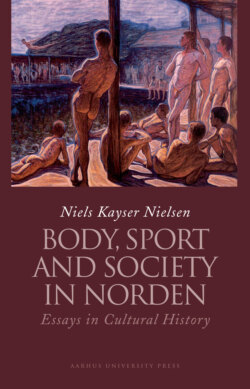Читать книгу Body, Sport and Society in Norden - Группа авторов - Страница 5
BODY AND ENLIGHTENMENT IN LATE 18TH CENTURY DENMARK
ОглавлениеIn the summer of 1787 a young official from the Board of Trade, Mathias Lunding, undertook a three-month journey around the Kingdom of Denmark and the Duchies of Slesvig and Holstein to observe the state of industry and domestic crafts in different parts of the country. The idea was his own and it was backed by the Board of Trade which gave him instructions to guide him on his way. The itinerary advised the young lawyer not only to make observations on agriculture but also to visit places in Denmark where “factories of enterprise” were particularly successful. These included glove production in Randers, the machine bleachery in Haderslev, stocking knitting in Hammerum Herred, lace manufacture in Møgeltønder and Tønder, and the new factory in Fredericia. Top priority, however, was given to the domestic linen manufacture with its associated spinning schools in the Næstved district and southern Fyn. It was said, for instance, of the factory in the Barony of Brahetrolleborg that:
It deserves attention on account of the plan and order that is found there in every class of work and the success the plant has had as regards the many spinning schools that keep up the work without any extraordinary support. (Paludan 1979: 12)
A couple of days after Midsummer 1787, Matthias Lunding set off on his tour. The idea was that he would write a report on his observations so that they could serve as a basis for starting further production operations. The report came to nothing, however, but by good luck Lunding kept a private journal of his travels, which besides giving data on technical and economic matters also contains a wealth of information that is interesting for the history of culture and consciousness. His diary from the journey was published in 1979 in C. Paludan (ed.): “Matthias Lundings rejsedagbog 1787”, Kulturminder 3. rk, bd. 2. We learn a great deal, not just about what contemporary reality was like, but also how it was perceived, i.e. what a young, ambitious official thought that it was like, or what it ought to be like. As a relic of the age of reason in the late eighteenth century, Lunding’s journal is of great value. It is characterized throughout by optimism, enthusiasm about progress, and a zeal for reform, but it also leaves us in no doubt that considerable change was necessary, and that a great deal of work remained to be done. He said of the town of Odense, for example:
As regards beauty and splendour the town is improving, but it is declining in wealth, and is rather well provided with beggars, especially children. (Paludan 1979: 23)
We notice the tone immediately: the sober bourgeois official’s criticism of empty show and shabby genteelness, against the background of his basic pragmatism which also causes him to be alert to idleness and poverty. We can likewise suspect that he sees a certain connection between the lack of production and the begging.
